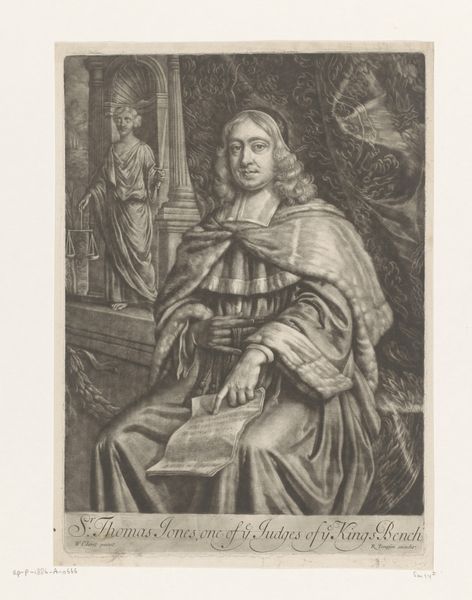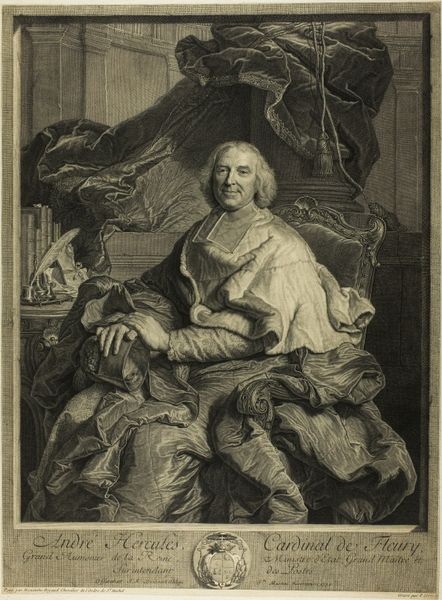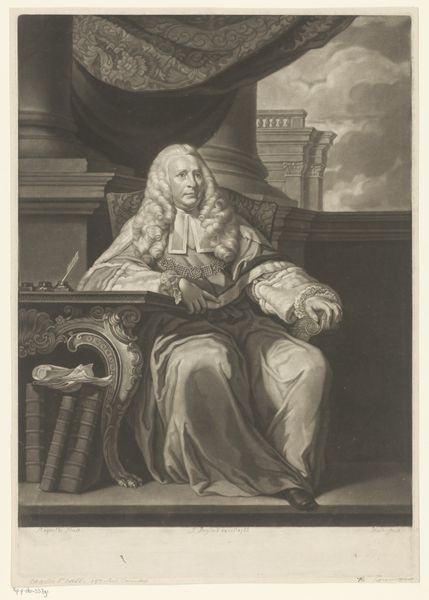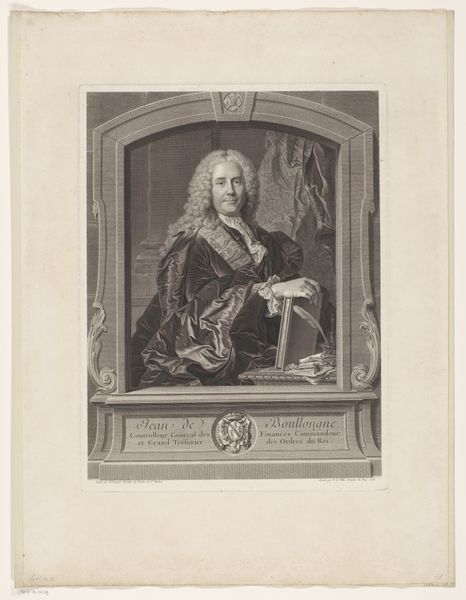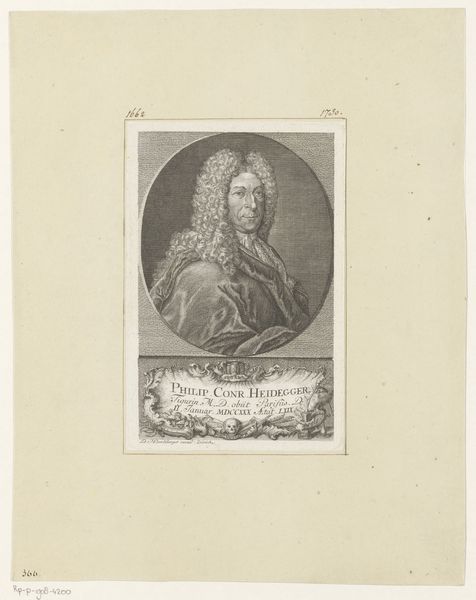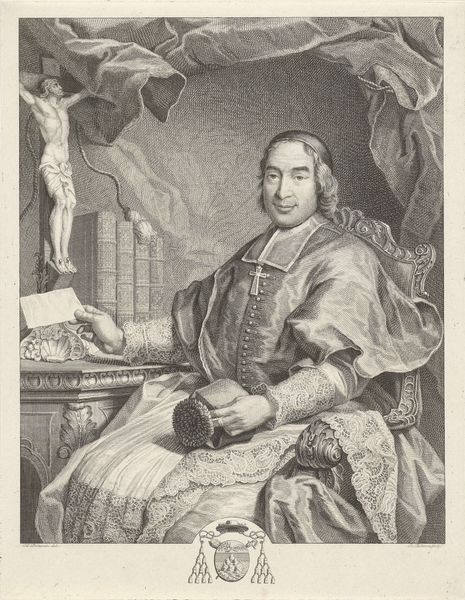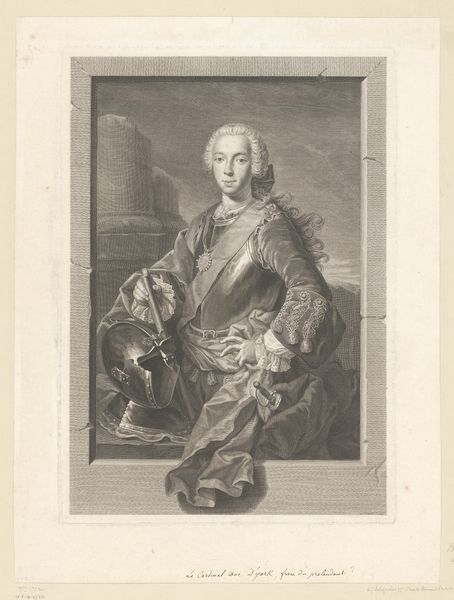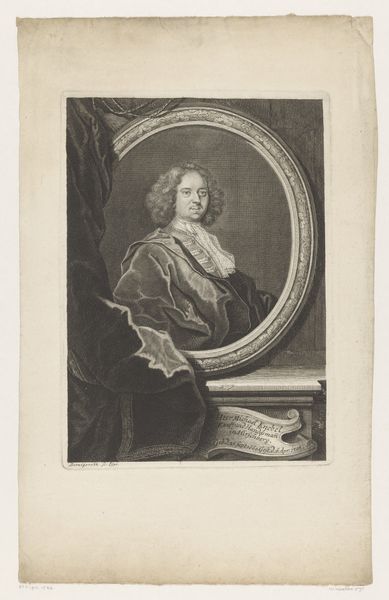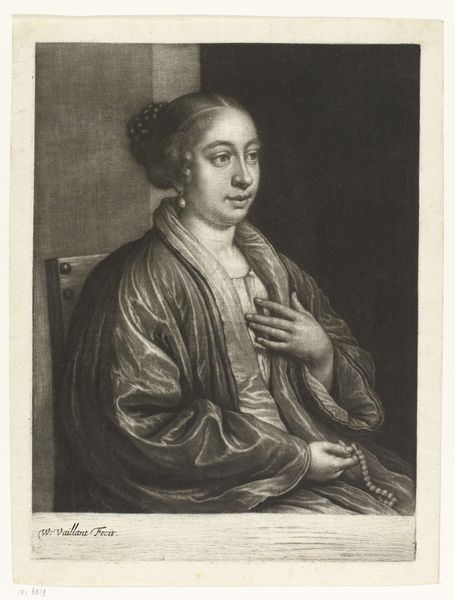
print, engraving
#
portrait
#
baroque
# print
#
pencil drawing
#
portrait drawing
#
history-painting
#
engraving
Dimensions: height 368 mm, width 278 mm
Copyright: Rijks Museum: Open Domain
Editor: So, this is "Portret van Willem Dubbelens," dating from between 1739 and 1774, by Pieter Anthony Wakkerdak. It’s a print, an engraving, that gives it a striking graphic quality. I'm immediately struck by how it seems to celebrate the artist and his work. What stands out to you in this piece? Curator: It’s tempting to view this simply as a conventional portrait of its time, but I think it offers more than that. Consider the context: the Enlightenment’s emphasis on reason, on individual achievement. What does it signify when artists, often overlooked laborers, begin to portray themselves this way, surrounded by the tools and signs of their trade? How does it challenge conventional hierarchies and who gets to participate? Editor: I see what you mean. Placing the artist amongst his sculptures, and rendering the print in great detail elevates the status of artistry as a profession. The pen the subject is holding could point to artistic expression broadly understood. Curator: Exactly! The very act of creating and circulating such an image challenges pre-existing notions around craftsmanship and intellect, pushing back against systems that would rather artists simply replicate the masterwork without actually getting acknowledgement for their artistry. And, what does this suggest about Wakkerdak's awareness of his own position as an artist creating representations of artists? What dialogues and networks could have inspired that decision? Editor: That's fascinating, considering how easily art can get separated from discussions about labour or about equity. Thank you. It gives me a new perspective on how art can be viewed as part of larger social discussions, even works from the past. Curator: And hopefully an invitation to always think critically about what an image wants us to see, and what remains unspoken within the visual narrative.
Comments
No comments
Be the first to comment and join the conversation on the ultimate creative platform.

